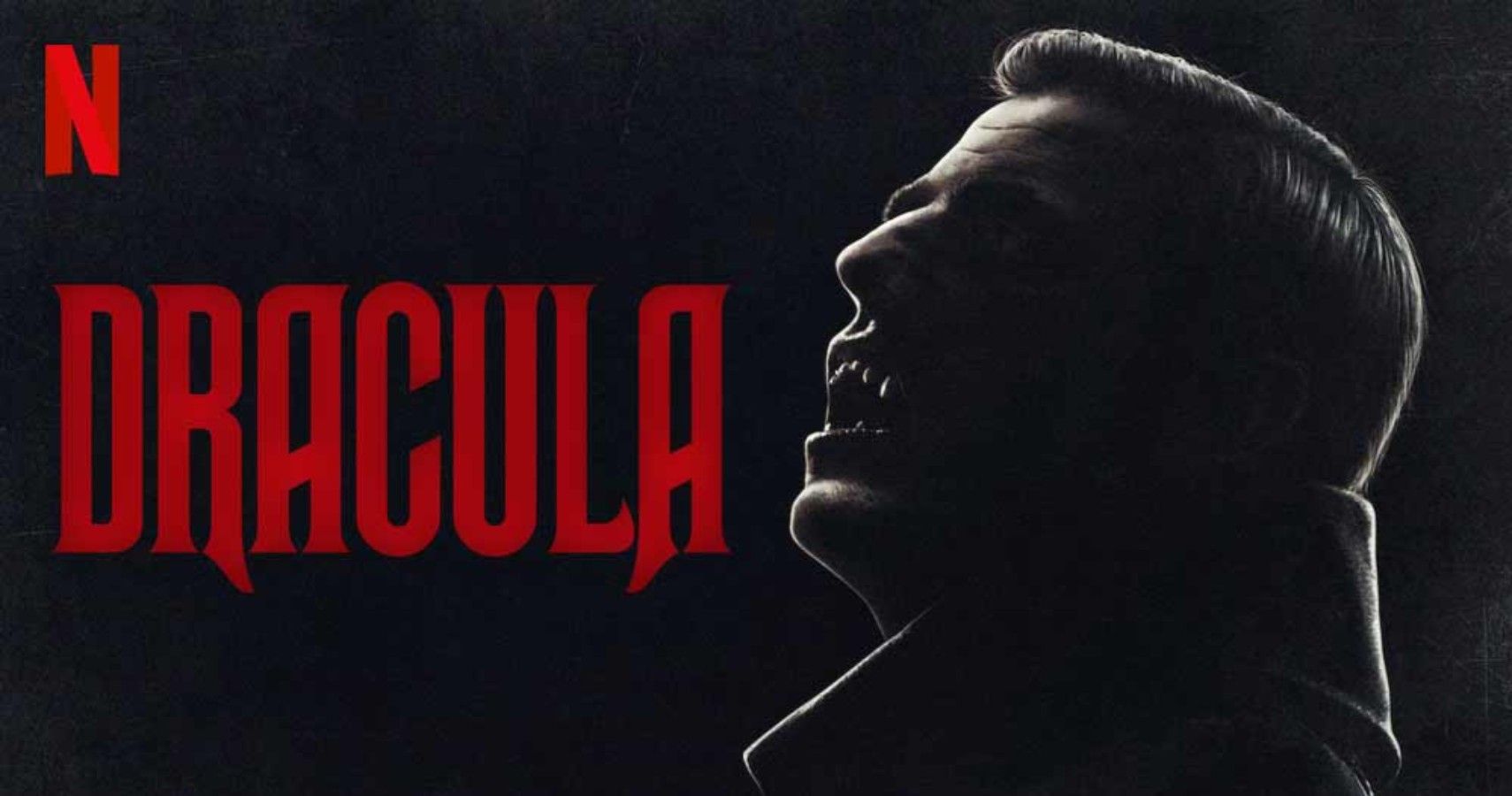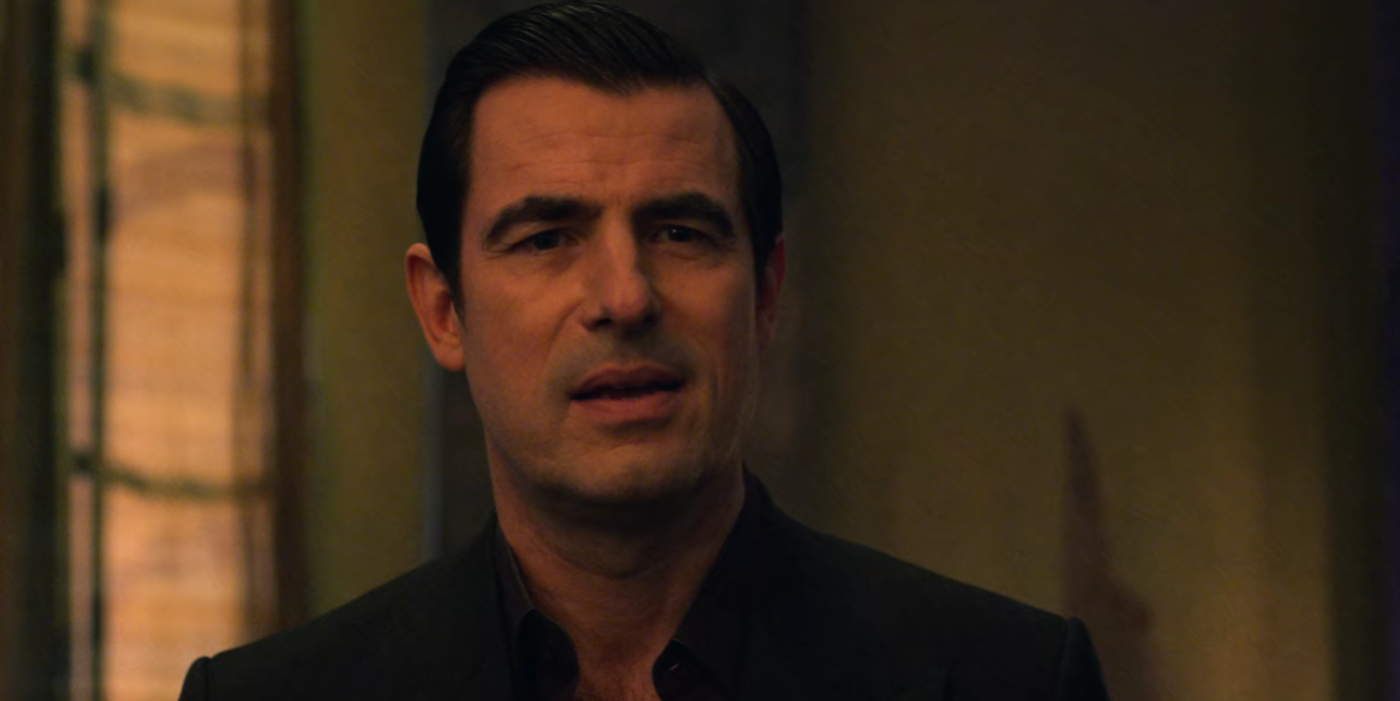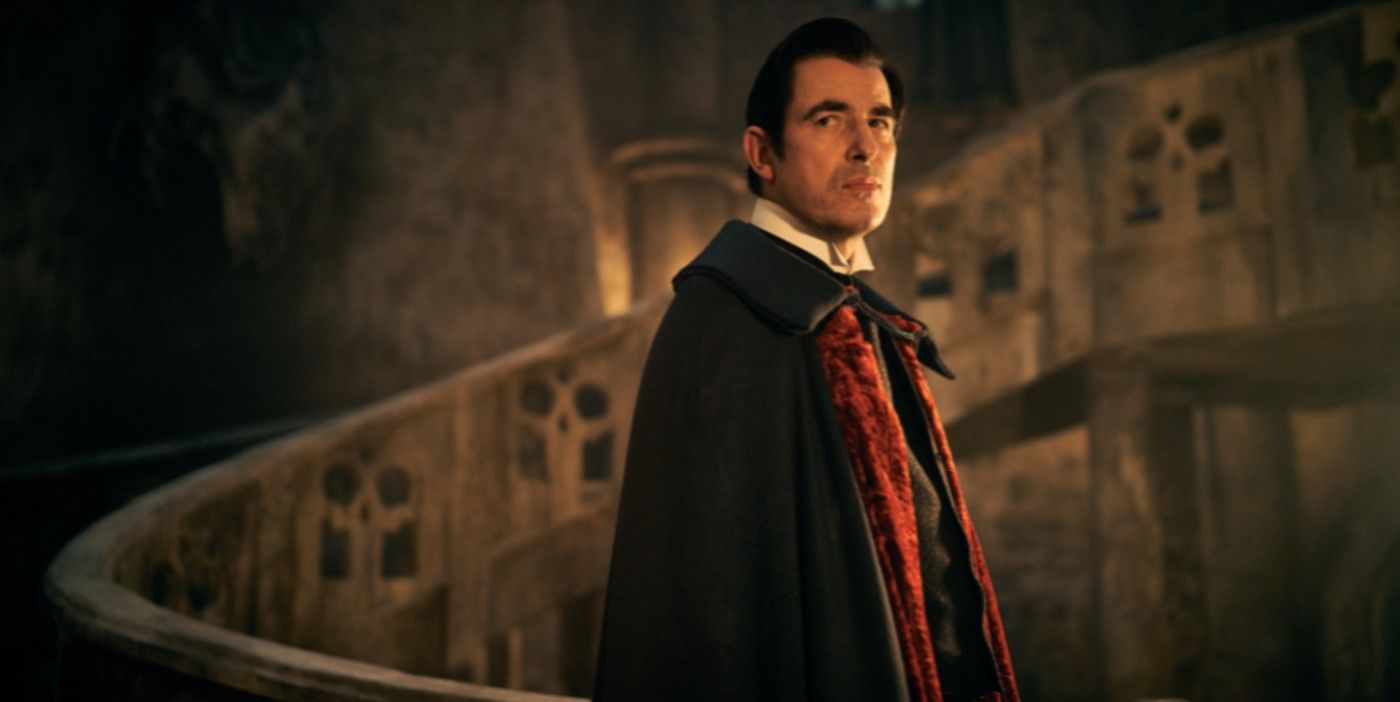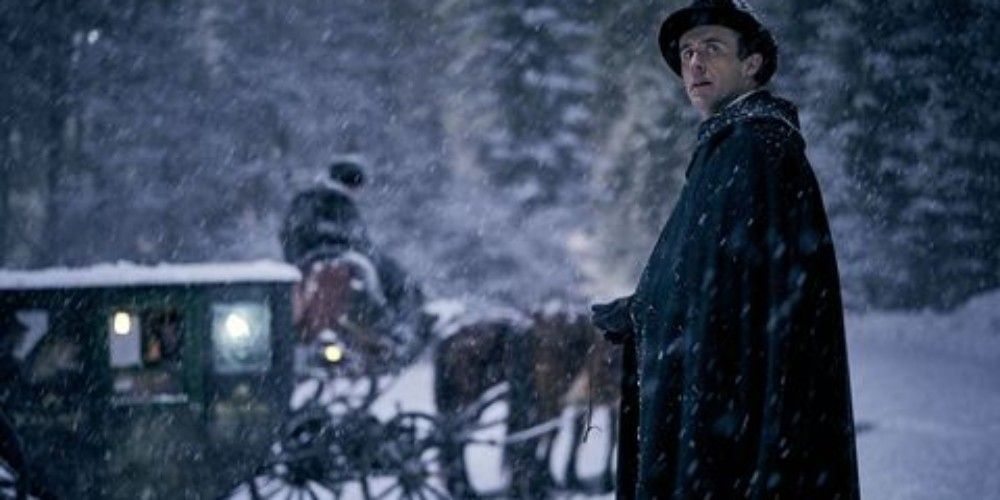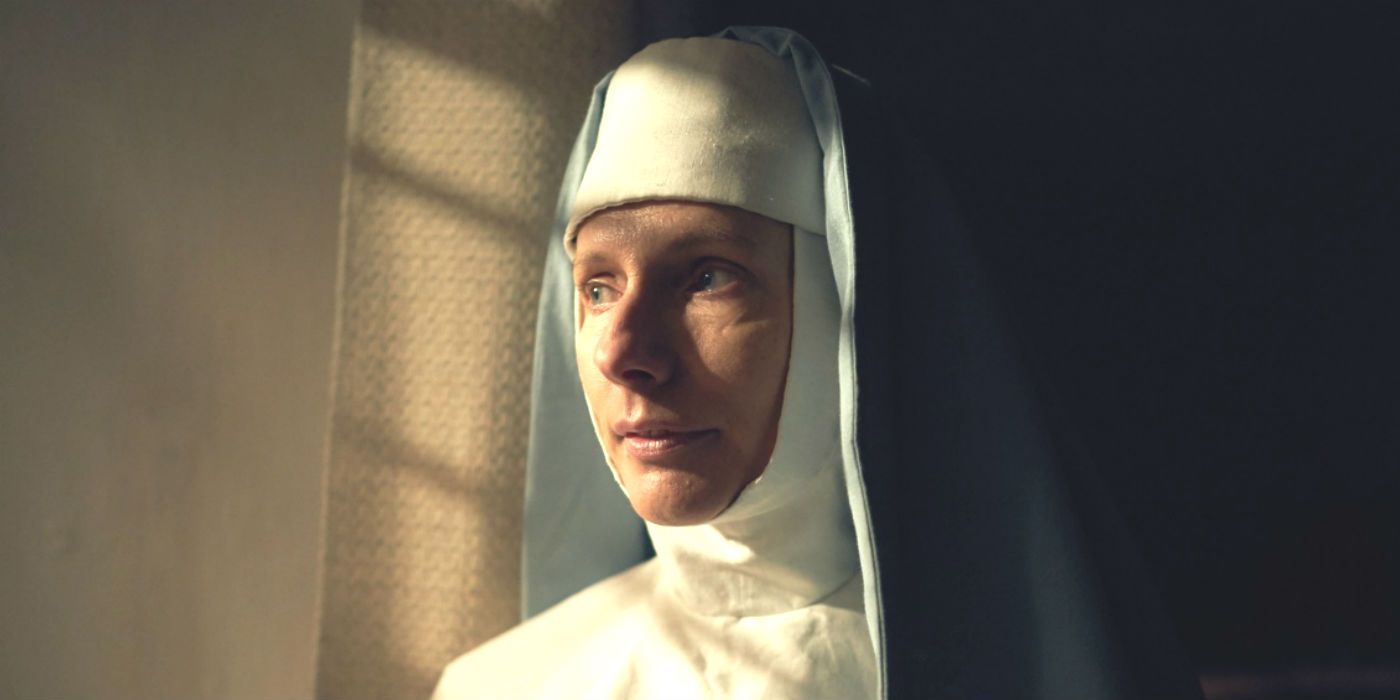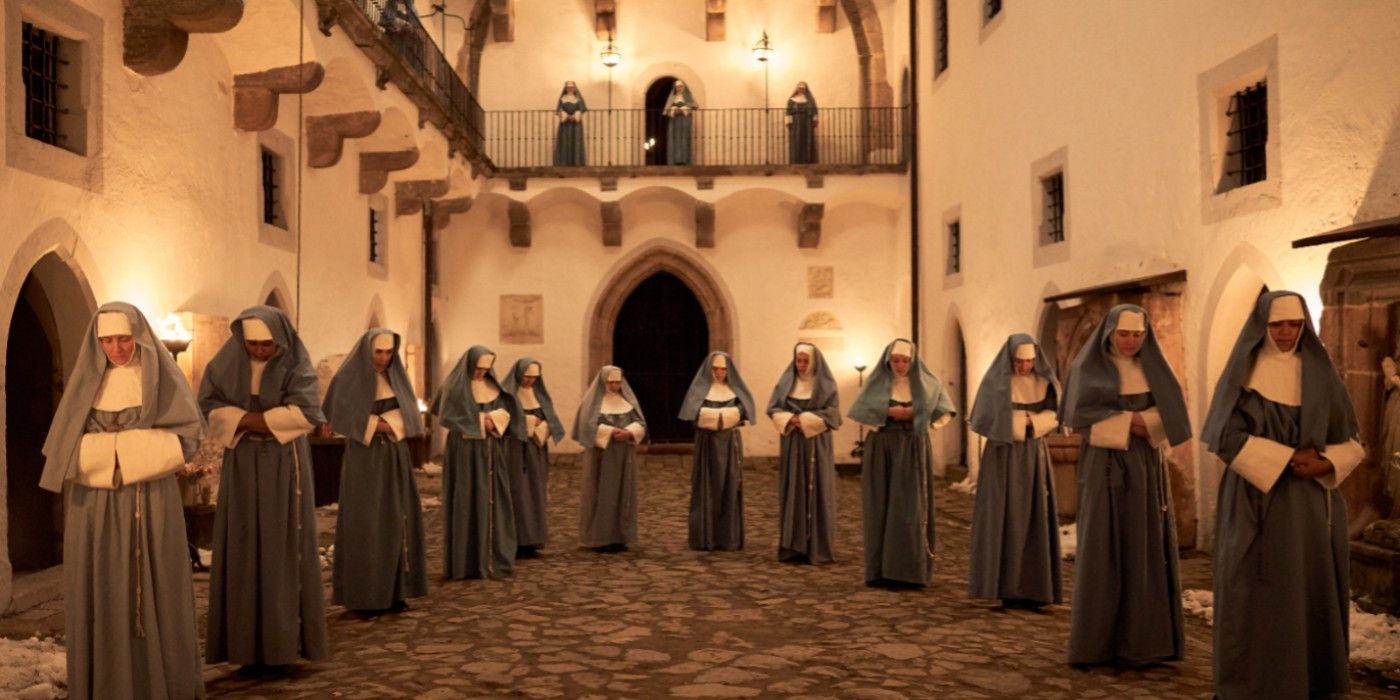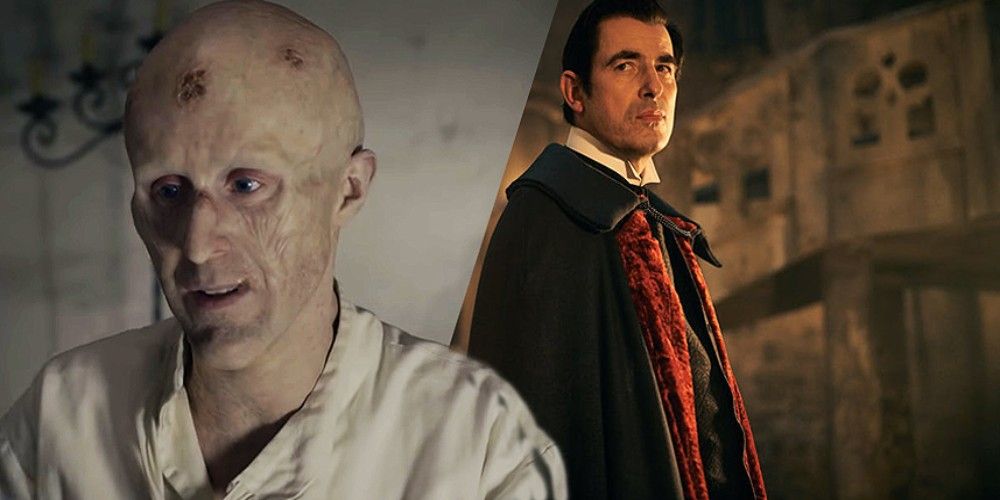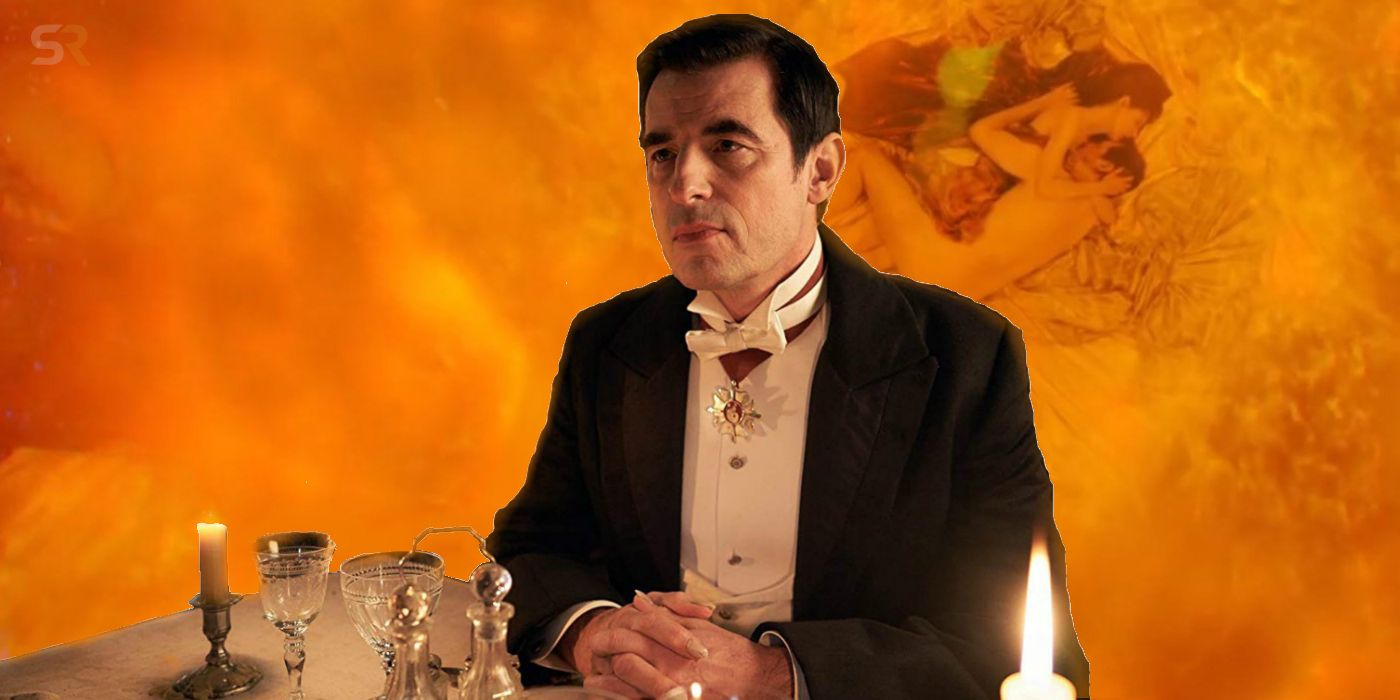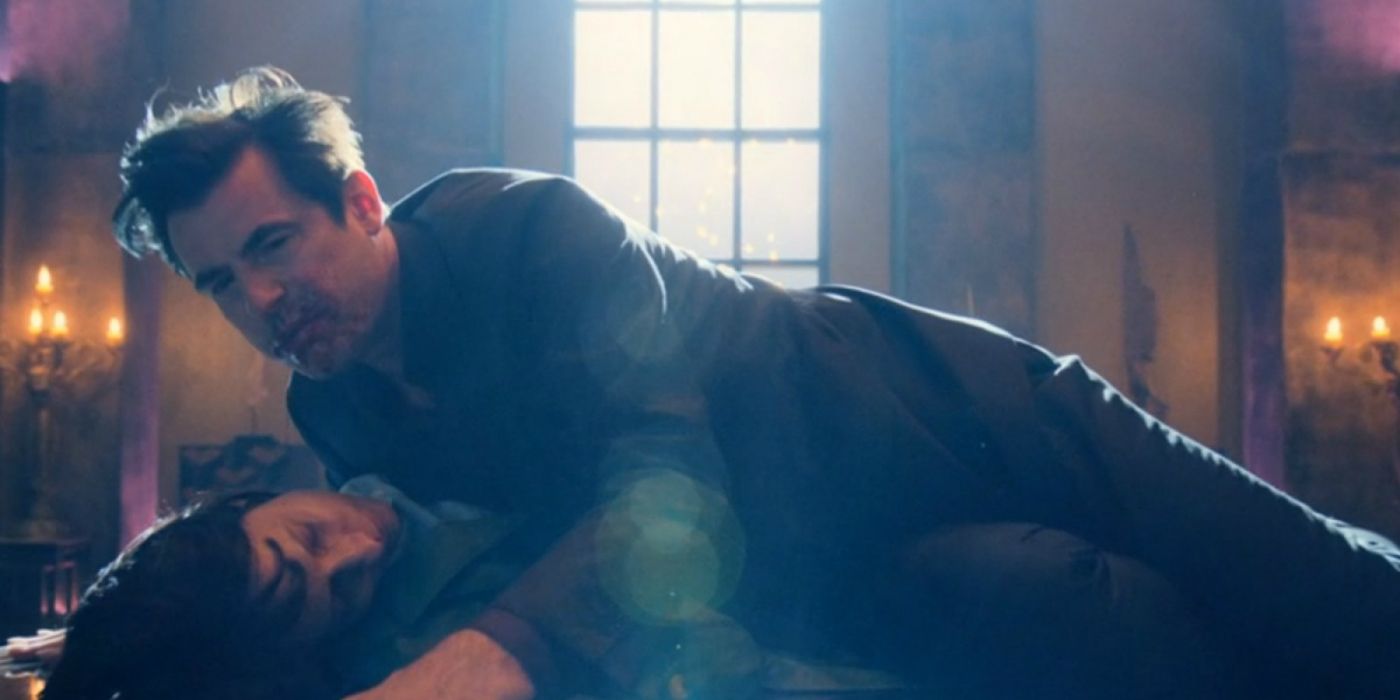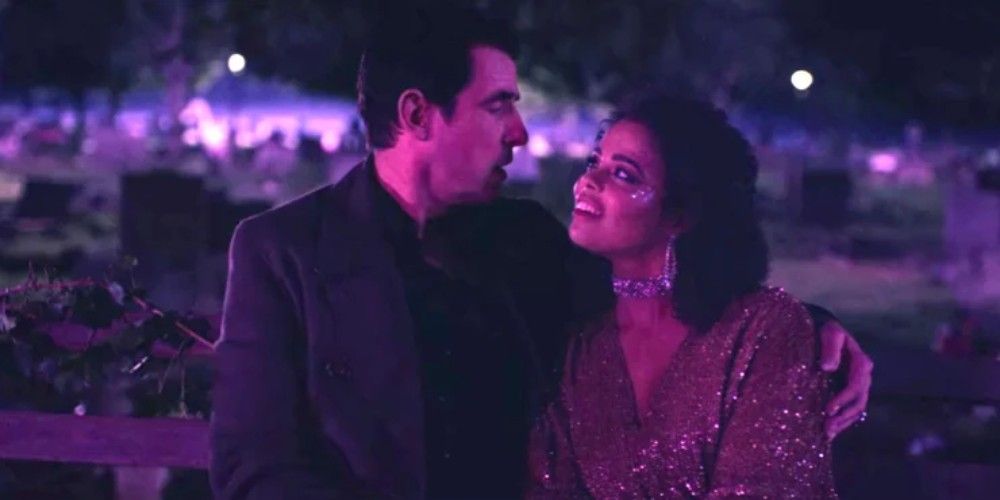Vampires have existed in various folklore for hundreds of years, but it's Bram Stoker's Dracula, written in 1897 that has given us our most comprehensive concept of the vampire archetype. From fearing the sign of the cross to avoiding sunlight, the tropes that Stoker used to create the character of Count Dracula have informed every piece of vampire television and film to date.
Netflix's three-part Dracula series both captures the essence of the horror masterpiece and takes many creative liberties with it. The character of Count Dracula has been depicted in film and television over 200 times, holding the record for the most adapted fictional entity, and Netflix clearly wanted to throw in a few surprises viewers wouldn't expect. Below you'll find 5 things it kept from the classic novel and 5 things it changed.
KEPT: DRACULA'S TRANSFORMATION FROM OLD TO YOUNG
From the description we get of Dracula form Jonathan Harker's perspective in the novel, Dracula is presented as an elderly man (with hair on his hands!), whose friendliness and charisma put Harker at ease. He is frail, weak, and decrepit until he begins to feed on living things.
As he draws on the life force of others, he begins his transformation into a powerful, youthful man in his prime. Dracula is only able to do this later in the novel when he arrives in London, and the locals are unfamiliar with vampires, whom the Transylvanians protect themselves against.
CHANGED: DRACULA'S APPEARANCE
Much of what we get from Dracula's appearance in the novel is from Jonathan Harker's journal while he's staying in the Count's castle. He describes Dracula as a "tall [old man], clean-shaven save for a long white mustache, and clad in black from head to foot, without a single speck of color about him anywhere".
He also is described as having pointed ears, needle-like teeth, and short-clawed hands. Claes Bang resembles this description in the beginning, but gradually as he feeds and becomes younger, he resembles more of Bela Lugosi or Christopher Lee's portrayal in other horror films. He does not have the "dark iron-grey" hair and mustache he retained in the book and is seen wearing much more color.
KEPT: JONATHAN HARKER STORYLINE (MORE OR LESS)
For the most part, the Netflix series keeps the Jonathan Harker storyline intact, beginning with Harker acting as a solicitor to the Dracula estate. Count Dracula wishes to move to England, and Harker arrives at his enormous castle in the Carpathian Mountains to finalize the transaction of property.
He encounters one of Dracula's "brides", and eventually comes to discover that Dracula is a vampire. He manages to escape and flee to a convent, where nuns protect him. Harker eventually would journey to London and encounter Dracula again in the novel, but not in the Netflix version. The only piece of Harker found in London is the "Jonathan Harker Foundation" founded to study Dracula.
CHANGED: VAN HELSING'S GENDER
In the novel, Professor Abraham Van Helsing is a Dutch doctor with a large variety of interests and is called upon by John Seward to help him cure the mysterious illness that plagues Lucy Westenra. In the Netflix series, Van Helsing's gender is changed, and the character becomes Agatha Van Helsing, a sardonic nun that Jonathan recounts his story of Dracula to.
Agatha uses both faith and science, superstition and intellectual curiosity to combat Count Dracula, who becomes over the course of the Netflix series her arch-nemesis. She may not be the "short, strong, barrel-chested" philosopher and physician of the novel, but she retains his "absolutely open mind", his "indomitable resolution", and "self-command".
KEPT: THE NUN RESCUE
Once Jonathan escapes from Dracula's castle, he flees to a convent in Budapest, where he is rescued by Sister Agatha and her cohort. This also happened in the novel, though not in exactly the same circumstances (i.e., Jonathan Harker hasn't been turned into a vampire).
The Netflix series does visually document the mental breakdown he suffered in the novel, and just like in the novel Mina Murray arrives to nurse him back to health along with the nuns. Unfortunately, Dracula's arrival curtails their marriage ceremony and escape to London.
CHANGED: THE RENFIELD CHARACTER
While being treated by nuns in a Budapest convent, Jonathan Harker exhibits signs of mental hysteria as well as physical decay. He is getting weaker by the day due to being fed on by Dracula to regain his strength, and he's written accounts of wishing to serve his "Lord" Dracula, which has traditionally fallen to the pitiful character Renfield.
The Renfield of the novel was an insane individual locked in an asylum, who fed on the "life force" of rats, bugs, and anything he could get his hands on. In the Netflix series, Jonathan behaves the most like Renfield until his death, and in the third episode another solicitor is given the name Renfield, but he doesn't get much to do other than inexplicably serve Dracula without once mentioning desiring to be turned into a vampire himself.
KEPT: CLASSIC VAMPIRE TROPES
Bram Stoker's Dracula is the reason that we are aware of the most popular vampire tropes. From Buffy the Vampire Slayer to True Blood, these tropes have been mentioned at one point or another to describe vampire weaknesses, and the Netflix series is no exception.
Count Dracula has an aversion to sunlight, he cannot stand mirrors (though not for the reason you might think), he abhors the sign of the cross (also for a slightly different reason than Stoker explains), and he must be "invited" into a victim's home to kill them. The series even touches on his necromancy skills (communicating with the dead), a nifty little talent other iterations sometimes gloss over.
CHANGED: DRACULA'S FEEDING INSIGHTS
While Dracula gorges himself on blood to sustain his youth, his vigor, and his powers, the Netflix series gives him another more prominent reason. While the novel constantly iterated "the blood is the life", the Netflix series gives new meaning to "Blood is lives".
By feeding off particular people, Dracula acquires the "story" of their life. In a way, they "live" through him. He even picks up some of their behavioral patterns. If he feeds on a man from Germany, he will be able to speak fluent German, which is certainly a handy trick.
KEPT: DRACULA'S ABILITY TO TRANSFORM
With today's visual effects, it's easier than ever to showcase the wide variety of ways that Dracula can show off his immortal power. In the novel, Dracula has always been as strong as "20 men" in his prime, but he could also transform into a wolf, a swarm of bats, or a chilling mist.
In the Netflix series, we see Dracula transform into all three of these forms. When he's in the convent in Budapest, he's even able to manifest a pack of wolves to rip apart nuns. Nothing is as powerful as his transformation into Claes Bang, however, as being a seductive man is his best bet for getting to feed.
CHANGED: THE TIME PERIOD
Obviously the biggest change from Stoker's novel to the Netflix series is the fact that by the end of the second episode, Dracula is taking place in the modern age. Dracula's coffin has been at the bottom of the sea for over a hundred years, and when he emerges from the waves, he's in the 21st century.
This allows for some fun commentary on what else "sucks the life" out of us today. As he discovers, Count Dracula is far from the worst offender there, as social media, technology, and our social habits are all on display. However, viewers will find it jarring that he's after a modern Lucy Westenra, and battling a distant relative of Sister Agatha Van Helsing.

